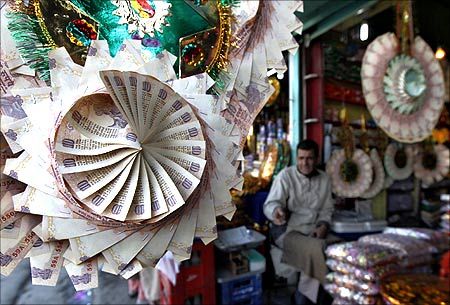 The Raghuram Rajan committee report for evolving a composite development index of states, submitted to the finance ministry today, has a note of dissent from member Shaibal Gupta.
The Raghuram Rajan committee report for evolving a composite development index of states, submitted to the finance ministry today, has a note of dissent from member Shaibal Gupta.
The six-member committee was set up in May this year to consider the backwardness of states in order to evolve a composite development index of states.
The committee has proposed a general method for allocating funds from the Centre to the states based on both the state's development needs as well as its performance.
Each state, as per the new criteria, will get a fixed basic allocation of 0.3 per cent of overall funds, and an additional allocation depending on its development needs and performance.
Multi-dimensional index of backwardness, the committee said, is based on per capita consumption as measured by the National Sample Survey Organisation (NSSO), the poverty ratio, and a number of other measures, which correspond to defining poverty outlined in the Twelfth Plan.
As per the report, states with score of 0.6 and above on the Index have been classified as 'Least Developed'; states with score below 0.6 and above 0.4 'Less Developed'; and states with score of below 0.4 'relatively developed'.
Disagreeing with this, however, Gupta states in his dissent note: ‘Unfortunately, the majority report of the committee seems to have expressed some judgements that defy logical arguments. During the deliberations of the committee, I have repeatedly drawn the attention of the members to these anomalies. Since my repeated requests remained unheeded, I am constrained to submit this note of dissent on the final report.’
In his dissent note Gupta strongly disagrees with replacing the per capita GSDP (per capita income or PCI) with the monthly per capita consumption expenditure (MPCE) for calculating the index of backwardness.
‘By doing this, the committee has not only gone against the spirit of the finance minister's budget speech, but also against our own terms of reference,’ Gupta writes.
Explaining why in his opinion the PCI is superior to the MPCE as a measure of under-development of a geographical area, he says, ‘If both the PCI and the MPCE are measured accurately, the difference between the two would be: (a) per capita savings and (b) remittance income. Typically, the more developed an area, the higher is the per capita savings as a percentage of total income. Thus, a more developed area would have a proportionately lower MPCE compared to its income, in relation to a less
developed area.’
So, by replacing per capita GSDP with MPCE, he argues, the suggested index will considerably deprive the poorer states of precious resources that are mediated through the Planning Commission and Finance Commissions.
‘I honestly think that an index based on per capita GSDP is more likely to generate a consensus at the all-India level than the one based on MPCE.’
Some of the other points he disagreed were choosing a 'percentage of SC/ST Population' as one of the variables, which he says certainly is not an ‘outcome variable’; treating household banking facility as a household amenities variable and ‘as an exclusive indicator of financial inclusion’, which he said was not correct; and not including any reference to population coverage under the connectivity index in spite of his insistence.










